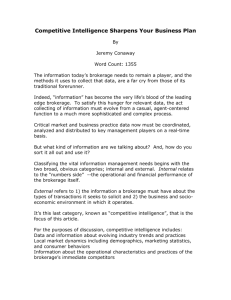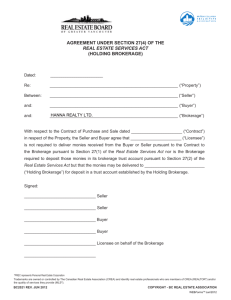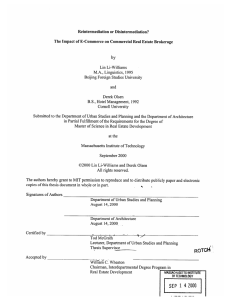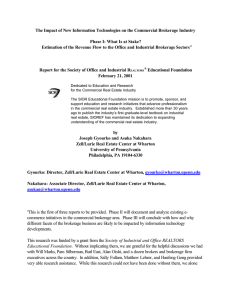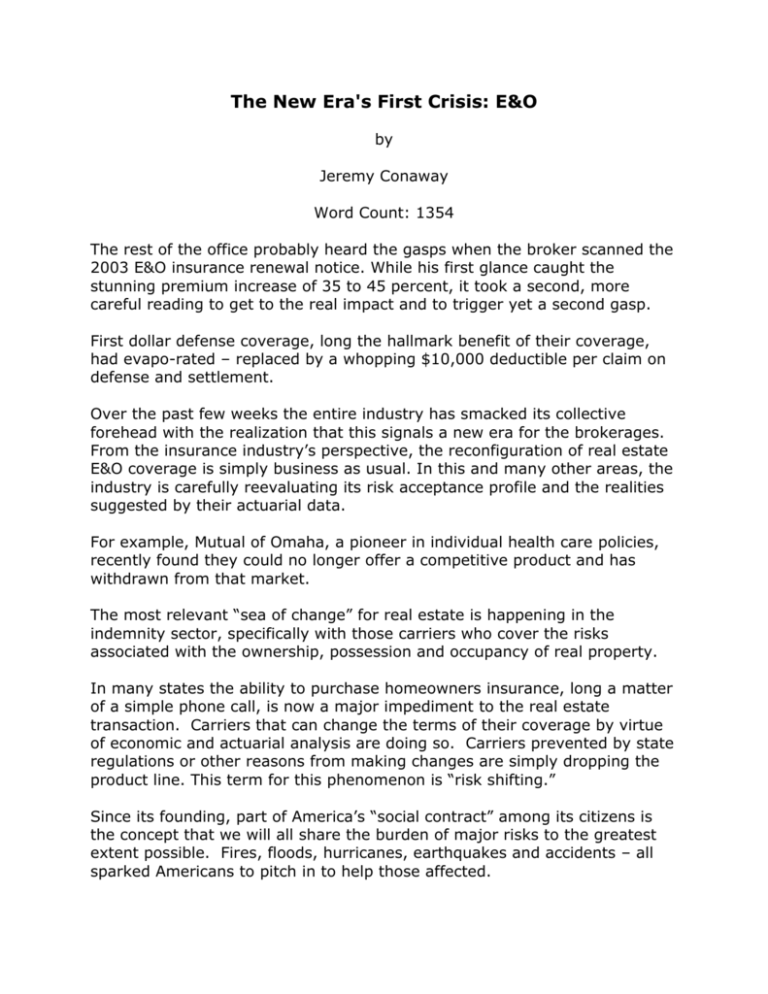
The New Era's First Crisis: E&O
by
Jeremy Conaway
Word Count: 1354
The rest of the office probably heard the gasps when the broker scanned the
2003 E&O insurance renewal notice. While his first glance caught the
stunning premium increase of 35 to 45 percent, it took a second, more
careful reading to get to the real impact and to trigger yet a second gasp.
First dollar defense coverage, long the hallmark benefit of their coverage,
had evapo-rated – replaced by a whopping $10,000 deductible per claim on
defense and settlement.
Over the past few weeks the entire industry has smacked its collective
forehead with the realization that this signals a new era for the brokerages.
From the insurance industry’s perspective, the reconfiguration of real estate
E&O coverage is simply business as usual. In this and many other areas, the
industry is carefully reevaluating its risk acceptance profile and the realities
suggested by their actuarial data.
For example, Mutual of Omaha, a pioneer in individual health care policies,
recently found they could no longer offer a competitive product and has
withdrawn from that market.
The most relevant “sea of change” for real estate is happening in the
indemnity sector, specifically with those carriers who cover the risks
associated with the ownership, possession and occupancy of real property.
In many states the ability to purchase homeowners insurance, long a matter
of a simple phone call, is now a major impediment to the real estate
transaction. Carriers that can change the terms of their coverage by virtue
of economic and actuarial analysis are doing so. Carriers prevented by state
regulations or other reasons from making changes are simply dropping the
product line. This term for this phenomenon is “risk shifting.”
Since its founding, part of America’s “social contract” among its citizens is
the concept that we will all share the burden of major risks to the greatest
extent possible. Fires, floods, hurricanes, earthquakes and accidents – all
sparked Americans to pitch in to help those affected.
Insurance is the product the marketplace created to embody this policy.
With today’s wide range of policy types, most Americans enjoy the benefits
of joining together to shoulder the risks associated with everything from
owning a snowmobile to death itself.
In fact, each of life’s common risks is carefully studied and analyzed by
insurance company actuaries whose expertise allows their employers to
accurately predict loss ratios and to set premiums appropriately.
When the economics and profiles of a specific risk become commercially
unattractive, they are dropped and the risk floats around looking for a new
home. If no one steps forward to assume (underwrite) that risk, by default
our system turns the process over to the trial attorneys who use the courts
to determine where the risk should reside.
Usually, society is very reluctant to allow a violation of the “risk sharing
clause” in our social contract by “sticking” the party who suffered the loss
with the entire risk. Often a lot of energy and creativity is expended to place
the risk on parties whom society, through the court system, considers more
acceptable. And that’s how we get lawsuits against fast food chains for hot
coffee spills and unhealthy food that “causes” customers to get fat.
The current E&O situation in real estate is a product of this very process.
The carriers who sell homeowners insurance have determined that the risks
arising out of such modern day ills as mold simply create too much risk and
potential liability.
So, under the prudent and conservative business rules of the insurance
industry, those product lines either are being dropped or coverage for those
specific risks is being denied.
Accordingly, the “risk” is now out looking for a new home. For example, the
E&O actuaries believe the most likely new home for mold risk is with the real
estate practitioner who may not have warned their customer that surfaces
exposed to water may develop mold, and that some molds may be
detrimental to one’s health.
Upon reaching this conclusion, the E&O carriers have followed their brethren
in the indemnity field and are refusing to accept the whole risk.
Instead, they’ve decided their new partners in sharing the risk will be their
customers, the agents and brokers. So, let’s give a warm welcome to these
new partners, and we hope they enjoy their $10,000 first-dollar deductible!
What does all this mean to the brokerage community? Simply put it’s a
potential disaster. Broker profitability and company resources are at their
lowest point ever. Meanwhile, the number of transactions in which liability
could occur has increased through five years of record production.
The result is that our brokerages are facing potentially crippling exposure to
risk. It’s a situation that begs for an immediate response in terms of risk,
asset and company management.
Remember that most E&O polices are on a “claims made” format. This
means the policy does not cover liability created during the policy period,
but rather is based on the number and dollar amount of claims made against
the covered risk during that period.
Given most states’ five to seven year statute of limitations, this means some
claims for sales activities in 2002 may not arise until 2004 or 2005 when the
policy then in effect will be even more restrictive.
One has to think that the coverage and premium changes reflected in the
recent renewal notices are but the first round of risk shifting. Renewals in
the out years are bound to show significant premium increases, additional
deductions and coverage restrictions.
If you doubt this scenario, just talk to your physician friends. Even as this
article is written, the media is filled with stories about doctors in several
states who are giving up their practices as a result of dramatic changes to
their E&O (malpractice) coverage that real estate is just beginning to
experience. So, what can brokers do about it?
First, they should immediately find someone who can provide risk counseling
to protect the company’s assets from the liability created by both past and
future acts.
The sooner this process starts, the sooner their current assets can be
protected from risks that may be created each and every day moving
forward. It appears the best model will lie about halfway between what
physicians have done and what the trucking industry commonly practices.
Once the assets are protected, the second step is doing everything possible
to reduce and manage the risk of future liability. This will require the
development of standards of business practice for all major components of
the brokerage’s service package.
In turn, this also will require the company to mandate exactly which service
elements are included in the package and which are not.
As the astute will have already figured out, this E&O situation likely will be
the final nail in the coffin of the traditional brokerage mindset that allows
sales associates to choose the methods, practices and procedures they will
use in making a sale.
Brokers can expect wails of protest and resistance, along with the
suggestion that these changes directly challenge the “independent
contractor” status that most agents cherish and live by.
Suffice to say, it’s not likely the courts will allow risk to be shifted totally to
agents based on their independent contractor argument. The loss of agents
who refuse to cooperate with the firm in reducing risk probably will be
another “cost” of surviving in this increasingly complex business.
Now the good news. Brokers alarmed by these suggestions might find solace
in the fact that the prescription for building lasting customer relationships
and increased profitability is exactly the same as the prescription for
protection from increased liability.
This is the silver lining of the E&O crisis. But you should get started now!
Jeremy Conaway is the President of RECON Intelligence Services. He is a
recognized expert in the fields of brokerage and association design. His
company is currently a leading source of strategic and tactical ideas and
applications for the leading edge of the real estate industry. He is a
nationally known lecturer, author and facilitator. © 2008, Jeremy Conaway.
All rights reserved. For information regarding Jeremy’s speaking, consulting
and facilitating, contact the FrogPond at 800.704.FROG(3764) or email
susie@FrogPond.com; http://www.FrogPond.com.







